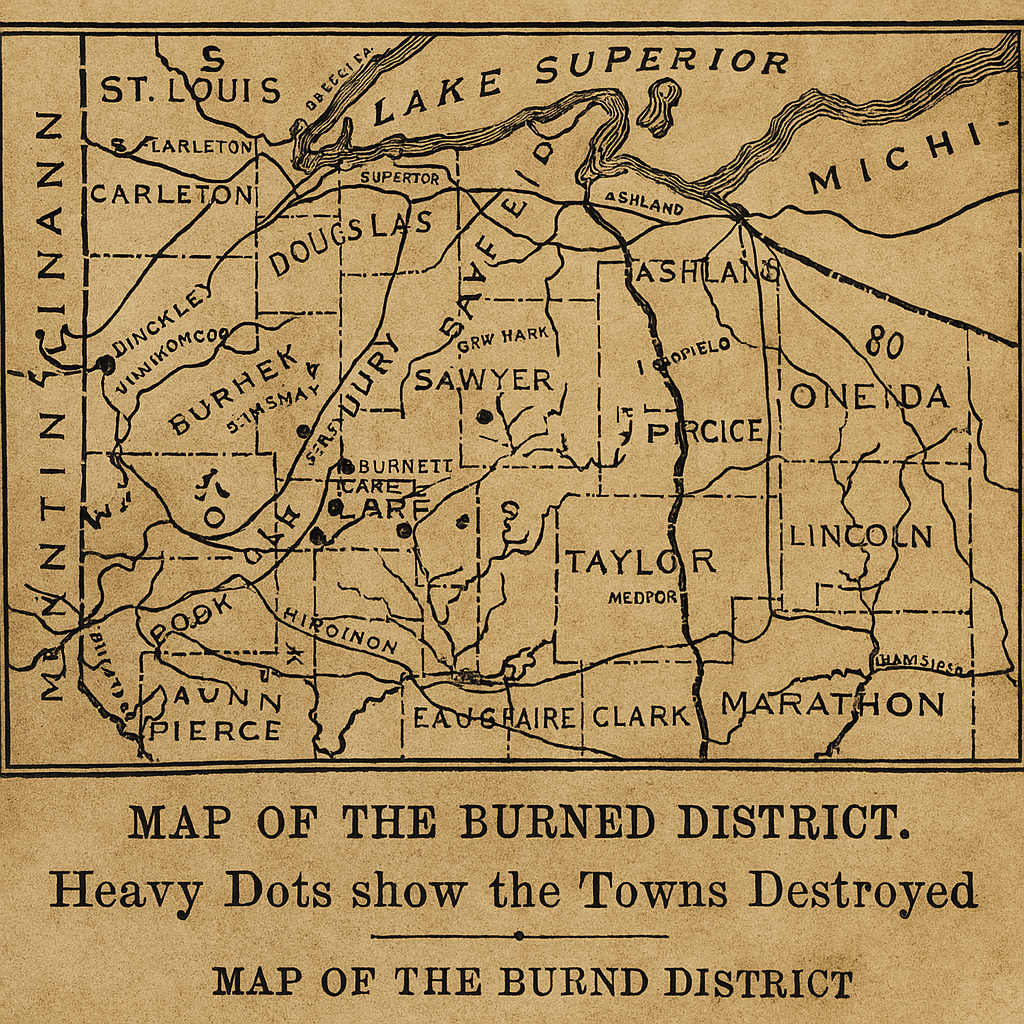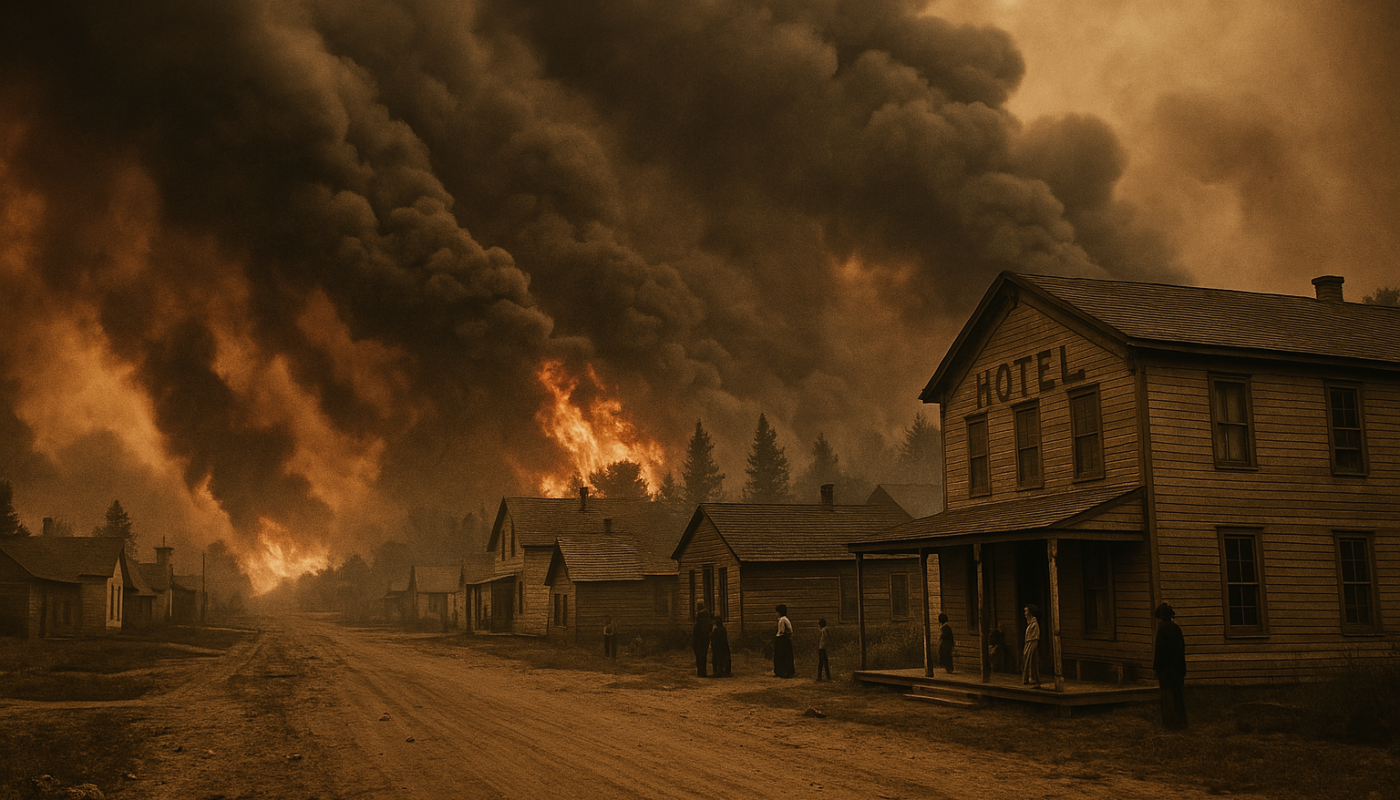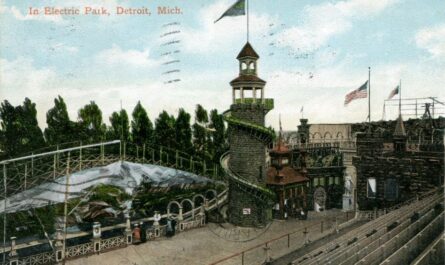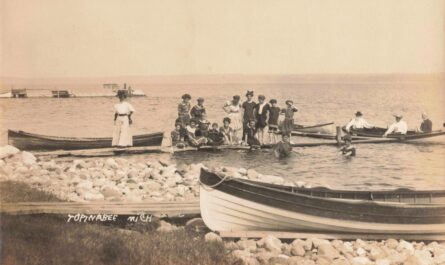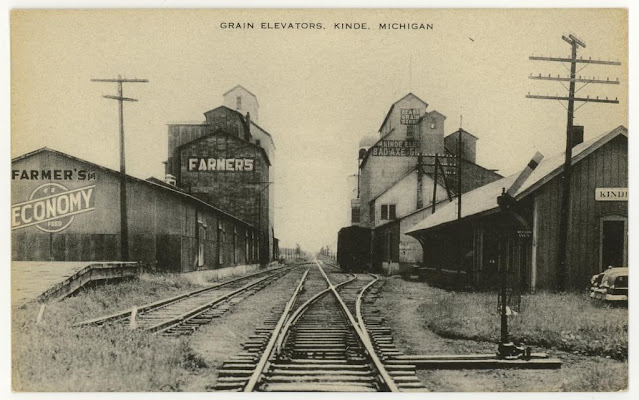On September 2, 1894, the skies over Michigan turned black.
The sun never rose. By midmorning, cities and towns across the state—from the Upper Peninsula to the Thumb—were plunged into eerie darkness. Schools closed. Ships froze in port. Telegraph lines failed. Farmers thought the world was ending.
But the cause wasn’t in Michigan. The 1894 Hinckley fire set a shadow of smoke over Michigan.
It was a massive firestorm that destroyed Hinckley, Minnesota, more than 400 miles away—and it sent a choking wave of smoke across the Great Lakes, straight into the heart of Michigan.
⛴️ Smoke Shuts Down Shipping
The day after the fire, reports from Sault Ste. Marie confirmed that navigation had halted. Steamboats refused to leave port. Visibility was reduced to just a few hundred feet. One headline read: “Smoke Makes Navigation Dangerous.”
From Duluth to Buffalo, captains reported that the smoke made it impossible to see objects just 100 yards away.
At East Tawas, the passenger steamer Ossifrage was stranded between Alabaster and Tawas City. She eventually had to be rescued by tugs.
Estimates at the time said over $40,000 in shipping losses were attributed to smoke-related disruptions—a significant figure in 1894.
🛤️ A Burning Train Races the Flames
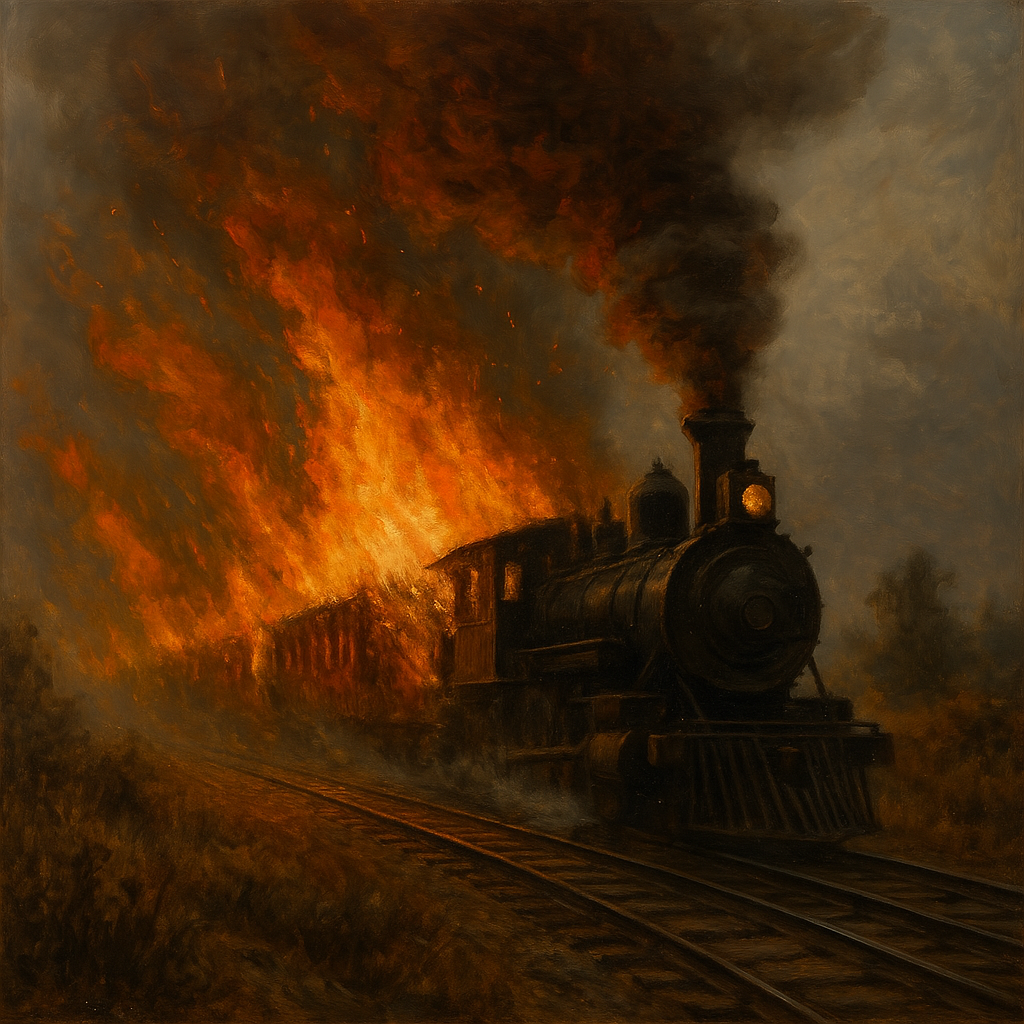
According to The Saginaw Courier-Herald, one of the most gripping incidents took place on Michigan rails. A train near Roscommon County found itself surrounded by advancing wildfire. Flames leapt across the tracks in front and behind.
The train’s engineer decided to do the unthinkable—run the train through the fire.
“The engine and cars passed through a wall of flame, the paint blistering, the glass shattering, and passengers on board praying openly.”
Miraculously, they made it through. But it underscored just how quickly the fires—and the smoke—moved across the state.
🌲 Fires Rage Across Michigan
While Hinckley burned, fires were already breaking out across Michigan. And as the smoke thickened, so did the panic.
- In Gladwin County, timber crews were nearly overtaken by flames as winds shifted suddenly.
- In Seney, six buildings burned before the wind pushed the fireline back.
- At Bay City, residents plowed firebreaks around barns to keep flames from advancing.
- In the Thumb, smoke was so thick that schools closed and church bells rang out warnings.
Western Union’s lines failed across the northern part of the state, and train companies halted service until visibility improved.
🛤️ Telegraphs Failed, Panic Spread
The Western Union Telegraph Company was unable to maintain communication with towns throughout the Upper Peninsula and northern Lower Michigan.
Meanwhile, religious leaders in towns like Bad Axe and Pinconning reported large crowds gathering in churches, believing the end was near.
In the days that followed, the haze spread south into Lansing and Detroit, with papers reporting a “dull red glow” in the air and ash falling like snow.
🌫️ The Red Sun and the Black Noon
Descriptions from newspapers paint a surreal picture:
“The sun, when visible, glowed blood-red. Chickens roosted at midday. Cattle refused to leave their barns. The heat and smoke were suffocating.”
— Detroit Free Press, Sept. 3, 1894
🔚 Aftermath and Legacy of the 1894 Hinckley Fire
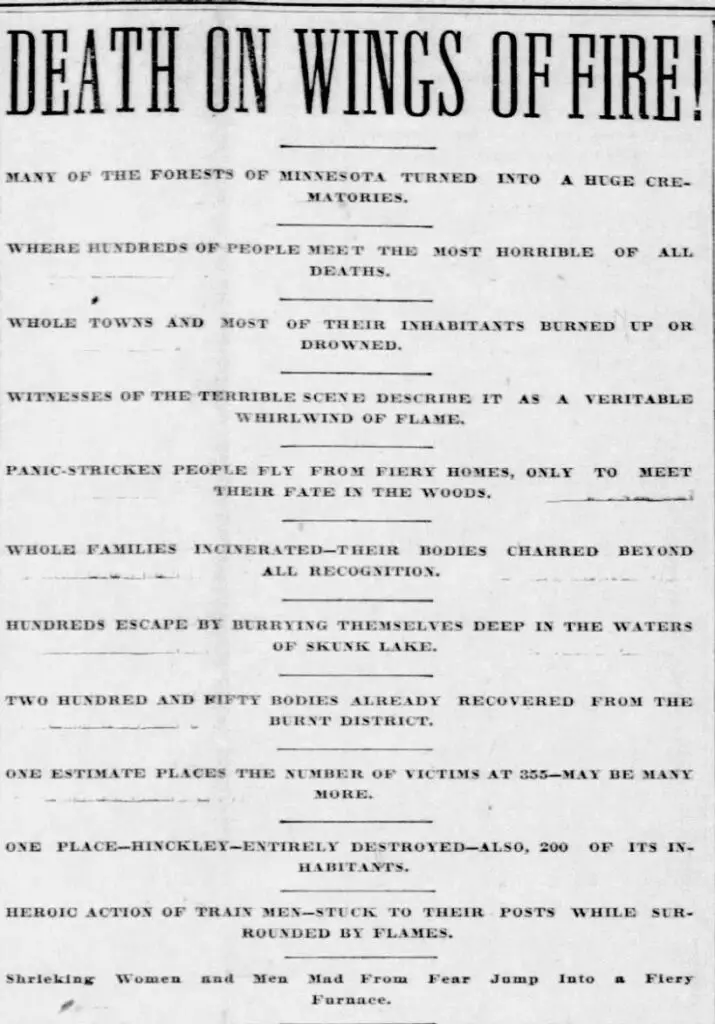
The fire in Minnesota killed more than 400 people. Michigan’s direct death toll remains unclear—but damage was widespread. Countless acres of timber burned, structures were lost, and dozens of communities were left shaken.
Today, the Hinckley Fire is remembered as a Minnesota tragedy. But its smoke cloud made it a Michigan event, too—one of the rare times a disaster from across state lines visibly altered everyday life across the Great Lakes.
📍 Sidebar: What Caused the Hinckley Fire?
In short: a perfect storm.
- Weeks of drought
- Logging waste left in the forests
- Sudden, shifting winds
- A spark—possibly from a train or campfire
The firestorm exploded in minutes, creating a wall of flame over 200 feet high and moving faster than people could run.
🗺️ Historical Artifact: Map of the Burned Region
